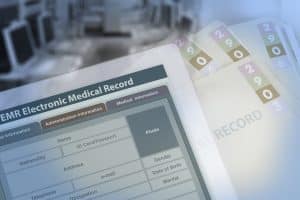As a holistic billing company, we focus on integrative health and billing insurance for holistic providers, but we are often asked by our clients for recommendations on how to promote their practice. In our experience, your acupuncture practice can gain new customers and strengthen your current client base with the right marketing.
Learn more about how your holistic practice can develop the most effective acupuncture marketing strategy for overall enhanced revenue cycle management!
Why Marketing Your Acupuncture Process Helps You Stay Competitive and Drive Additional Income

The importance of successfully marketing your acupuncture practice cannot be understated. Even if you have some of the best delivery of care to your patients, your new patient acquisition will be low if you can’t get your name out there! With the right marketing strategy, your acupuncture practice can stay competitive and continually bring in new clients—which means more revenue.
Staying competitive is crucial to driving additional income in an increasingly saturated holistic market. More people than ever before are turning to holistic medicine to maintain and restore their health. The global complementary and alternative medicine market is predicted to have an over 22% growth rate from 2021 to 2028 – eventually reaching over $ 400 billion by 2028. As more and more people turn to holistic medicine, your acupuncture practice must adopt competitive marketing techniques to stand out from the crowd.
Developing a marketing strategy for your holistic practice starts at the basics: delivering the right message. Since more people are turning to holistic medicine to alleviate their back pain and other ailments, cultivating your unique treatment approach that is both authentic to your practice and helps answer the questions clients are looking for will also gain you not only new patient acquisition, but committed clients who keep returning for more.
Acupuncture Marketing Best Practices
In such a growing market saturated with competitors, it may seem difficult to stand out from the crowd. By adopting these best practices, your acupuncture practice can better market to new patients as well as maintain existing relationships with your current client base.
Develop Your Brand
Part of what will set your acupuncture practice apart from the competition is developing your acupuncture clinic’s unique brand. This includes your message style and overall mission statement. You’ll have to address what kind of approach you’ll take to market your practice to the public and what tools you’ll use.
All of this will influence your message tone. For instance, if you’re marketing acupuncture to the elderly, you will use a different tone, style, and content than if you were attracting a millennial client base. Or, let’s say you’re focusing on delivering acupuncture services as an opioid alternative for patients recovering from addiction or surgery. You would use a much different tone of voice in your marketing that speaks to their specific needs than if you were trying to attract a more generic audience.
Grow Your Online Presence
In today’s digital age, building an online presence for your acupuncture practice is a must. This includes an optimized acupuncture website so your business can be easily accessible to those online. A successful website is one where you have the basics, such as your location, contact information, and a bit about who you are and your practice. However, you can add increased value to your website by including what makes your acupuncture practice unique – such as your treatment philosophy, team bios, and FAQs about acupuncture itself.
You also have to make your holistic practice easy to find online as well. Claim your Google business profile so local customers can help locate you in the “acupuncture practice near me” search results. Consider also adding your practice to review sites, such as Google Reviews and Yelp, for customer feedback. Since prospective patients like reading online customer reviews, these can be valuable platforms to highlight your holistic practice.
Utilize A Wide Variety of Digital Marketing Tools
Mastering omnichannel acupuncture marketing is key to reaching a variety of audiences. There are so many options out there now for reaching new customers that you don’t want to just stick to one digital marketing tool!
What digital channels you choose to market on should reflect on the audience you’re trying to reach, as well as the voice of your practice. Some digital marketing tools for your acupuncture practice can include:
- Social media marketing, including using Facebook, Instagram, Twitter, and LinkedIn.
- Content marketing, such as providing useful content like blogging on your website.
- Email marketing to stay in touch with established patients.
Regardless of what digital marketing channels you use, or how many of them, the messaging on all platforms should remain consistent. This helps deliver the authentic image and message you want about your acupuncture practice to potential new clients and established ones.
How to Create a Google AdWords Campaign to Drive New Patient Acquisition in Less Than One Hour!

A Google AdWords campaign is by far the fastest and most cost-effective way to get your site to appear at the top of Google search results. Google‘s AdWords is a pay-per-click system where you pay only when a prospective patient clicks on your ad. When rolled out effectively, Google AdWords campaigns are a great way to drive new patients to your website, and ultimately help you generate more new patients.
By following these six easy steps, you can have a killer Google AdWords campaign for your practice in less than one hour!
Step 1: Set Up a Google AdWords Account
Go to www.google.com/adwords. Setting up your account can be completed in a few minutes.
Step 2: Create Your Campaign
Once you have set up and logged in to your account, you will want to create a new advertising campaign. Campaigns should be organized by the various services you want to advertise (such as chronic pain, cupping, and manual therapy). You will later create “Ad Groups” under each campaign to target specific services.
- Set the campaign name. If you want to promote “accepting insurance,” set your campaign name accordingly. Tying your campaign name to services you want to market will keep you organized and help you identify appropriate keywords and ad groups.
- Specify a geographical location for your ads to appear in. By clicking the “Let me choose” option, you can specify the city, region, or zip code so your ads only appear to your targeted audience. Limit your locations to keep your budget manageable.
- Set your daily budget. Depending on the keywords you choose, a single click can range from 20 cents to $14 or more and will vary by location. To determine your daily budget, decide how much you are willing to spend on a campaign each month and divide it by the number of days in the month.
Step 3: Create Ad Groups
Ad groups are a collection of ads under a campaign that corresponds to a group of related keywords. Creating ad groups enables you to further segment your campaign to focus on specific products or services you want to promote.
Step 4 Generate Ad Text
After you create ad groups, you will need to set the headlines, descriptions, and URLs.
- Headline (25 characters): Write a brief statement that includes the related keywords. For example, a good headline might read “Acupuncturist Accepting Insurance.”
- Description: Next, create a two-lined description (35 characters or less) that emphasizes the benefits of your practice and includes a clear “call to action” to encourage potential patients to click, call, or contact your practice.
- Add URLs: You will add your display URL (your web address) and the destination URL (the page a patient will be sent to after clicking your ad). The destination URL should lead to a page on your website that describes your services to help prospects quickly access information on the topic for which they searched. An example could be:
Headline: Acupuncturist Accepting Insurance
Description Line 1: Acupuncture treatments for back pain.
Description Line 2: Call for your free consultation!
Display URL: http://www.acupractice.com
Destination URL: http://www.acupractice.com/services
Step 5: Choose Relevant Keywords
Choose keywords that relate to your ad group title. When brainstorming keywords, make sure you use terms and phrases that people might search for on Google to find your practice. We recommend you use the AdWords keyword tool to help you build your keyword list.
Step 6: Add Corresponding Text into Your Website
If you are advertising a special offer or particular treatment, make sure your ad links to a page on your website that displays this information to help prospective patients immediately find what they are seeking. Edit your webpage to include your keywords, the title of your ad group, and the title of your campaign.
Remember, Google is the search engine for 87% of all web queries. By creating an effective Google AdWords campaign, you can drive immediate visitors to your website and convert these online search users into new patients.
Drive Revenue to Your Acupuncture Practice With HBS!
At Holistic Billing Services, we deal exclusively with holistic healthcare practices providing acupuncture, massage therapy, and chiropractic treatments. Whether you have questions on acupuncture insurance billing or other methods to enhance your revenue cycle management, feel free to contact our team today and let us know how we can help your acupuncture practice.
Medical billing and coding is a complicated, but necessary, process for both medical and holistic practices looking to be reimbursed for services. However, the world of medical billing processes can become rather complicated very quickly, with people throwing around a lot of technical terms that holistic practices may not be accustomed to hearing or dealing with. If your acupuncture practice plans on accepting insurance, you will need to become familiar with this terminology to maximize your insurance reimbursements and minimize denied claims.
You will frequently hear the following common acupuncture billing terms when dealing with insurance claims or working with an experienced acupuncture billing company like Holistic Billing Services. To ensure a streamlined acupuncture billing experience, keep this list handy in case you ever need to quickly reference unfamiliar acupuncture billing terms!
What is Acupuncture Billing?

Medical billing is the process of healthcare providers submitting claims with insurance companies in order to be reimbursed for their services. This can include anything from treatments, procedures, and testing. The medical billing process is essential for most practices to receive payments.
Acupuncture billing practices are not the same as traditional medical billing and have a different set of requirements. Before billing can be initiated, many holistic practices must first be credentialed with health insurance companies. On top of your holistic practice’s insurance enrollments, the right billing, coding, and SOAP documentation must be used.
Acupuncture billing uses its own unique set of codes. Since acupuncture services are always coded in 15-minute increments, you will use one code for the initial 15 minutes of service and then a separate code for additional units of time. Acupuncture CPT codes will only vary if you include electronic stimulation in your treatment.
There are numerous errors that can cause your insurance claims to be denied or delayed, resulting in your holistic practice not being paid on time for your services. A successful acupuncture practice is one with accurate acupuncture insurance billing, but how can you stay on top of it?
As an acupuncture billing company, our team at Holistic Billing understands that translating Eastern medicine techniques into Western medicine CPT codes can seem daunting. Even the most experienced acupuncturists get their procedure coding mixed up. But if you want to avoid insurance company denials, you need to use proper acupuncture CPT codes. Here are some helpful tips to avoid claim delays and denials so your practice can be paid for your acupuncture treatments.
How Providers Bill Insurance for Acupuncture

Current Procedure Terminology, or CPT codes, are used by insurance providers to document most medical procedures performed by healthcare providers, whether traditional or holistic.
These CPT codes characterize the type of procedure being done so healthcare providers can bill insurance companies for the right services and receive reimbursements.
Although holistic practices also use CPT codes to receive payments from insurance providers, they have their own unique codes and requirements which can make the process prone to errors. Understanding when to use the right acupuncture insurance billing codes is crucial to ensure a streamlined reimbursement process and receive timely payments for acupuncture treatments.
When mistakes are made during the billing process, whether due to inaccurate patient information or coding, the insurance company can deny the claim. This can delay the amount of time your holistic practice is paid by weeks – if not longer.
Chiropractic CPT codes are some of the most important components of the insurance billing process. Accurate chiropractic insurance billing is essential for your practice’s revenue cycle management, but errors can cause costly denials and delays.
As a billing company focused on holistic healthcare providers, Holistic Billing has the answers to many of the most common questions about chiropractic insurance billing and CPT codes. Find the answers below!
How Do You Bill for Chiropractic Treatments?

Chiropractic practices must bill insurance companies to receive insurance reimbursements using specific chiropractic CPT codes. These special CPT codes characterize the type of procedure being done so healthcare providers – whether conventional or holistic – can bill insurance companies for the right services and receive their due payment for treatments.
Holistic practices have their unique requirements when it comes to receiving insurance reimbursements. For a streamlined insurance billing process, practices must use accurate CPT codes that are unique to their specialty and procedures. Chiropractic CPT codes are some of the most important code sets for chiropractors.
Understanding the correct CPT codes for your medical practice is essential across all specialties when it comes to insurance billing. Holistic practices, including massage therapists, have unique health insurance billing needs. This includes specific CPT codes for massage therapy. Accurate massage therapy insurance billing is key for reimbursements to be processed faster and with fewer denials and delays.
Looking for a list of the most commonly used massage therapy CPT codes? Look no further! Holistic Billing is an expert when it comes to massage therapy insurance billing. Find the answers to many of the most common questions about the world of massage therapy insurance billing and CPT codes below!
How Do You Bill for Massage Therapy?

Just as with conventional medicine, holistic practices must bill insurance companies to receive reimbursements for their services using CPT codes. These Current Procedural Terminology codes, or CPT codes, are used by insurance providers to document most medical procedures performed by healthcare providers across all specialties. These CPT codes characterize the type of procedure being done so healthcare providers can bill insurance companies for the right services and procedures.
Like other holistic practices, there are unique CPT codes for massage therapy treatments that are specific to the specialty. For a massage therapist to receive quick and reliable payments from the insurance company, insurance coding and billing must be completed accurately. Errors can result in lengthy delays to the reimbursement process – or even denials.
In the world of billing insurance, insurers improperly issue medical necessity denial claims on the basis of treatments being not medically necessary quite frequently. This is especially true in cases where you are billing insurance for acupuncture, medical massage, or chiropractic treatments. Sometimes such denials are a mistake, but all too often, these denials by insurers are intentional and intended to avoid coverage for treatments.
Since these persistent denials exist, it is important for you to understand how to fight a medical necessity denial in order for your patient to receive all of the coverage they are entitled to. Learn more about how to appeal a medical necessity denial claim and the medical appeal letter template you should use for your best chances of revoking the denial.
Is Acupuncture Covered by Insurance?

Healthcare coverage for integrative medicine treatments like acupuncture and massage therapy has come a long way in the United States. Nowadays, it is common practice to complement traditional health care with other modalities like massage and acupuncture. However, not all health insurance plans cover these services, and those that do vary when and what they cover. On top of this, the insurance industry makes the billing process for acupuncture and other holistic treatments difficult and complicated. While some insurance plans will allow these sorts of treatments for a wide variety of medical conditions, others will have more limited plans.
Medicare has special requirements for acupuncture; recently in January 2020, the Centers for Medicare and Medicaid Services (CMS) announced their decision to cover acupuncture for chronic low back pain. Although the update was especially important, as it marks the first time acupuncture codes can be reimbursed by Medicare, the additional requirements made it impossible for most licensed acupuncturists to take advantage of it.
Unfortunately for holistic practitioners, the insurance industry makes billing for acupuncture and massage complicated with a variety of accompanying regulations and requirements. The majority of covered acupuncture services that need to be billed to insurance fall under four essential acupuncture CPT codes and two medical massage codes. Like other similar therapy-based practices, integrative health practitioners bill their services according to Current Procedural Terminology (CPT) codes. Each code is considered a billable unit used to track what treatments have been administered.
Acupuncture and massage services are always billed in 15-minute increments. For instance, in acupuncture, you will use one code for the initial 15 minutes of service and then a separate code for additional units of time. If you include electronic stimulation in your treatment, your codes will vary as well.
Evaluation and management services, or office visits, may be billed by acupuncture physicians on the initial patient evaluation and periodic follow-up evaluations, typically every 30 days or every sixth visit. However, it is not appropriate to bill these codes every time the patient receives acupuncture treatments, as acupuncture CPT codes 97810, 97813, 97811, and 97814 all include evaluation and management done as part of the overall daily treatment.
Are Chiropractic Treatments Covered by Insurance?

Just as with acupuncture, chiropractic treatments used to be rarely covered by insurance. This has since changed; most health insurance plans now cover chiropractic treatments due to the holistic practice’s positive reputation among many Americans for effective treatments for neck and back pain. In fact, chiropractors see an estimated 35 million people every year in the United States alone. Despite its popularity, insurance may only pay a certain amount of chiropractic treatments or under certain circumstances just as with other holistic disciplines.
Medicare will cover chiropractic manipulation of the spine for back pain management, but there are additional caveats just as with acupuncture Medicare coverage. To qualify for Medicare reimbursement, the patient must have active back pain and seek out chiropractic care that corrects this problem. Any chiropractic services administered as maintenance or preventative will not be covered, as well as any massage therapy or X-rays.
More than 10 million acupuncture treatments are administered annually in the United States – and the number continues to grow! Its rise in popularity has made it one of the most utilized forms of integrative-medicine in the country. The advantages of acupuncture extend from acute pain relief to a safe and effective alternative to opioid medications.
As more scientific studies are proving the efficacy of acupuncture treatments, it’s no doubt that this holistic therapy will continue to expand and become an even more accepted medical method for pain management.
What is Acupuncture?

A key feature of traditional Chinese medicine, acupuncture treatment involves the insertion of very thin needles through a patient’s skin at strategic points along the body, in various depths. Due to their small size, the needles do not bring any discomfort but can provide relief by interrupting pain signals throughout the body.
While acupuncture has been traditionally used to treat discomfort from a wide variety of diseases and conditions, it is increasingly used as a remedy for stress management and overall wellness.
As an insurance billing company, Holistic Billing has new providers contacting us daily about how to start medical billing. The first step is to get a National Provider Identifier number otherwise known as your NPI number. However, many holistic practices are unaware of how to apply for an NPI.
Luckily, the application process for getting an NPI number is pretty straightforward. Follow this guide and the NPI application checklist to help your holistic practice obtain its NPI!
What is an NPI?
A National Provider Identifier, or NPI, is a 10-digit identification number issued to healthcare providers in the U.S. by the Centers for Medicare and Medicaid Services. Your NPI will not change, even if your address, taxonomy, or name changes. Although every NPI is unique, it does not carry specific information about you, such as the state where you practice or your specialization.
The NPI must be used in place of other provider identifiers, such as a Provider Transaction Access Number (PTAN), Online Survey Certification & Reporting (OSCAR), and National Supplier Clearinghouse (NSC) when used in HIPAA standard transactions. For reference, HIPAA standard transactions are exchanges involving the transfer of health care data between two parties for specific purposes.
Why Does Your Holistic Practice Need an NPI?
Your holistic practice will need to apply for an NPI if you are a HIPAA-covered health care provider or if you bill insurance for your services. If your practice applies for enrollment, you must have an NPI. Any enrollment application without an NPI will be rejected.
An NPI also carries other benefits as well, such as simplifying electronic transmission of HIPAA standard transactions and efficient coordination of benefit transactions. However, it’s important to know that applying and receiving an NPI will not ensure you’re Medicare credentialed or replace your current insurance enrollment.
3 Options for Getting an NPI Number
Your holistic practice can get an NPI Number in one of three ways, depending on your preference.
Option 1: Apply Through a Web NPI Number Application
You can apply for an NPI through a web-based application. Visit the National Plan and Provider Enumeration System (NPPES) website. Individual providers must create a username and password through the Identity & Access Management (I&A) System, and log in to NPPES using that username and password.
Option 2: Apply Through a Mail Paper Application
You can complete, sign, and mail a copy of the application (Form CMS-10114, “NPI Application/Update Form”) to obtain an NPI number to the NPI Enumerator address listed on the form. To request a hard copy application through the NPI Enumerator, call 1-800-465-3203 or TTY 1-800-692-2326, or send an email to customerservice@npienumerator.com.
Option 3: Apply Through an EFIO
The final option you can apply for an NPI would be to permit an Electronic File Interchange Organization (EFIO) to submit application data through a bulk enumeration process. For more information on this option, check out the CMS website here.
NPI Application Checklist: How to Fill out the NPI Application
Your holistic practice can use this NPI application checklist to ensure that you have all the correct information when filling out the NPI number application from the CMS.

- Reason for Submitting NPI Number Application Form
- Entity Type (Are you an individual or an organization that renders health care?)
- Identifying Information (including that of sole proprietorships and incorporated individuals)
- Organization Name(s)
- Correspondence Mailing Address Information
- Business Practice Location Information
- Medicaid Identification Number (if applicable)
- Other (Non-Medicare) Provider Identification Numbers
- Provider Taxonomy Code(s)
- Individual Practitioner’s Signature
- Authorized Official’s Signature for the Organization
- Contact Person’s Information
The world of insurance billing is complex, and even more so for holistic practices. Understanding when to use the right acupuncture billing codes and procedures is essential to any successful medical practice – whether holistic or traditional. Accurate coding and billing practices ensure a streamlined reimbursement process so your practice can get paid and deliver the best care to your patients.
As a billing company focused on holistic healthcare providers, Holistic Billing is an expert in the world of acupuncture billing CPT codes. In any given year, roughly half of our new clients have never billed insurance before they started with Holistic Billing Services, so we are quite accustomed to their most frequently asked questions. Find the answers to many of the most common questions about Acupuncture CPT codes and billing practices below!
While a medical record audit is a lengthy process, it’s a necessary one to ensure your practice is as efficient, organized, and profitable as possible. Clinical documentation in medical records is crucial to delivering the most accurate care to patients, and disorganized medical records can easily hinder this. With medical record auditing, your holistic practice can determine areas that need attention before they result in fraudulent claims and billing activities.
Although medical records audits are necessary preventative measures for both conventional and holistic medical practices, they can be complex and time-consuming. Follow this guide for tips about how to have a thorough and efficient medical record audit to help your holistic practice be as successful as possible.
What is a Medical Record Audit?
Just like any conventional audit, a medical record audit is a process that includes internal or external reviews of what processes are being conducted accurately and what needs to be improved. This includes reviews of medical billing and coding accuracy, procedures, policies, and any other components that affect the efficiency and effectiveness of detailed documentation in your practice.
Medical record auditing is a preventative measure to catch potential errors that can result in liabilities and investigations. For example, these reviews can catch overlooked compliance issues that could impact your bottom line, your practice’s reputation, and the level of care you deliver to patients.
Why is Auditing Medical Records Important For Your Medical Practice?
The benefits of conducting medical record audits are numerous and should be reviewed regularly as a preventative measure at least once a year. Besides checking for compliance and liability errors, a medical record audit can also catch inefficiencies that are costing your holistic practice money.
According to the AACP, some of the benefits of medical record auditing include:
- To determine outliers before large payers find them in their claims software and request an internal audit be done.
- To protect against fraudulent claims and billing activities.
- To reveal whether there is a variation from national averages due to inappropriate coding, insufficient documentation, or lost revenue.
- To help identify and correct problems before insurance or government payers challenge inappropriate coding and conduct governmental investigations.
- To remedy undercoding and code overuse and to bill appropriately for documented procedures.
- To identify reimbursement deficiencies and opportunities for appropriate reimbursement.
- To stop the use of outdated or incorrect codes for procedures.
Auditing is especially important to catch mistakes that may otherwise go undetected and impact your bottom line. A medical records audit can also protect your holistic practice against fraudulent claims and compliance issues. If your practice is consistently submitting inaccurate coding, it could result in lengthy reimbursement delays, investigations, and penalties that cost you both money and time.
Four Tips for a Auditing Medical Records Successfully

When deciding to audit medical records in your holistic practice, the process can be intimidating due to its complexity and lengthy documentation. However, there are some tips you can implement to help speed up the process so you can achieve both an accurate and efficient medical record audit experience! Here are four simple tips to follow for a more successful medical record audit in your holistic practice:










